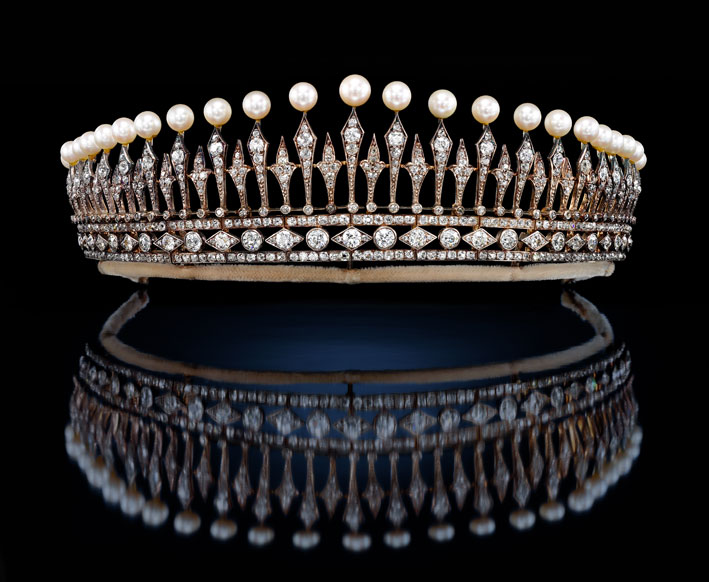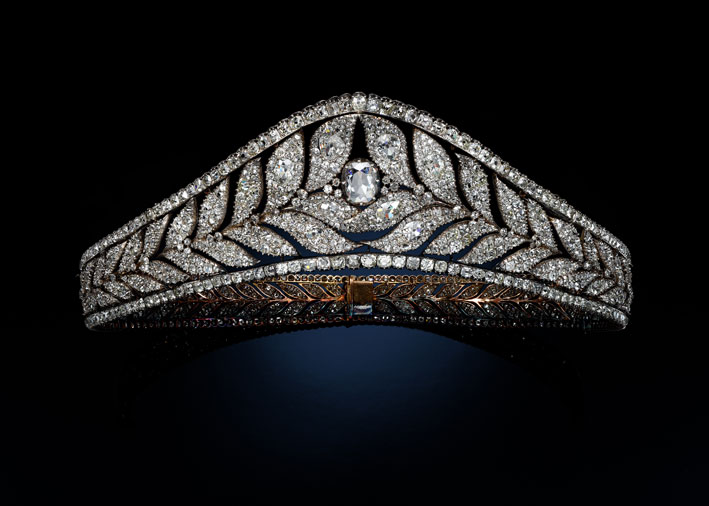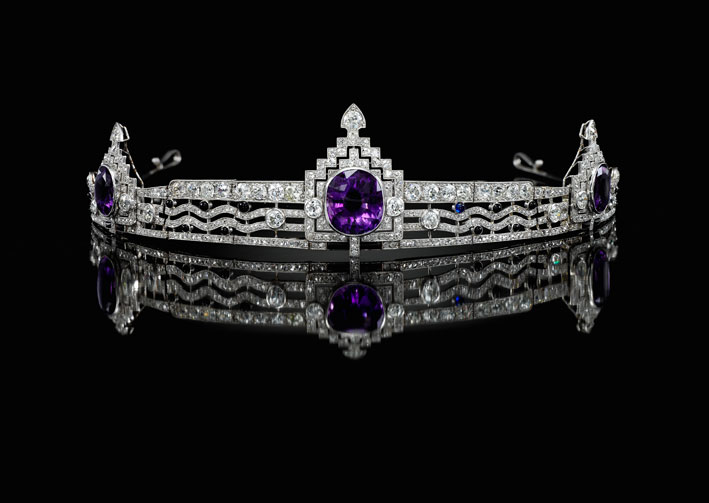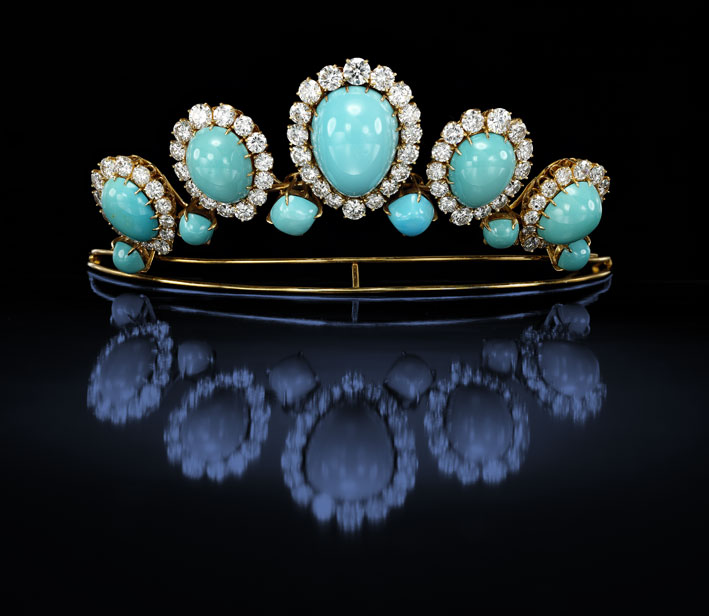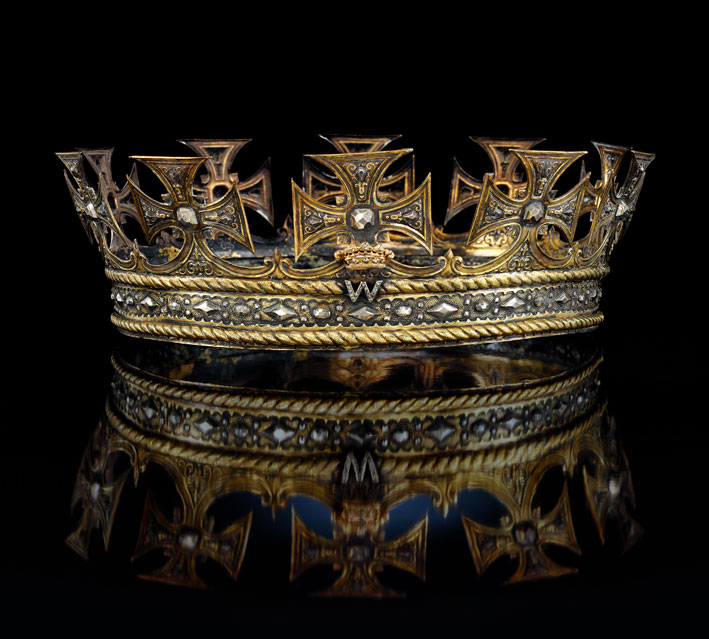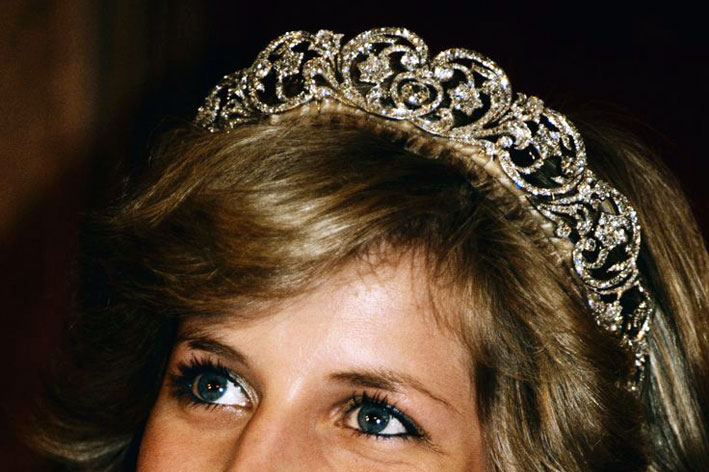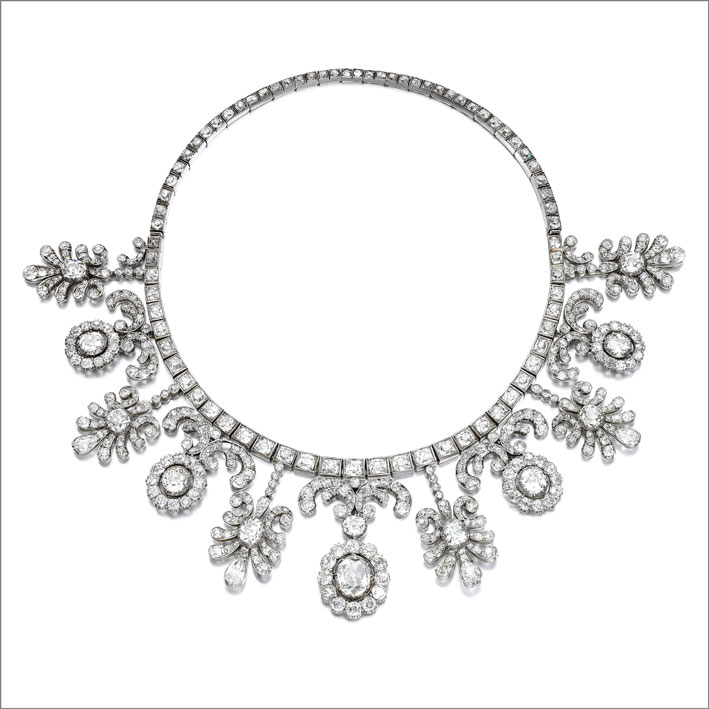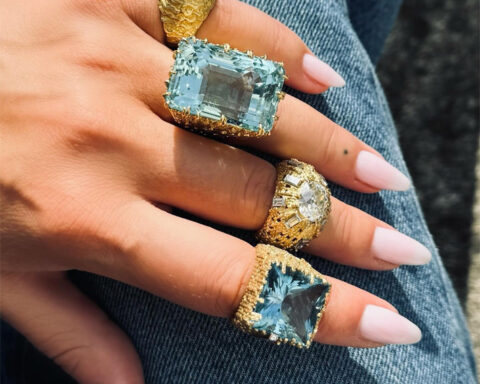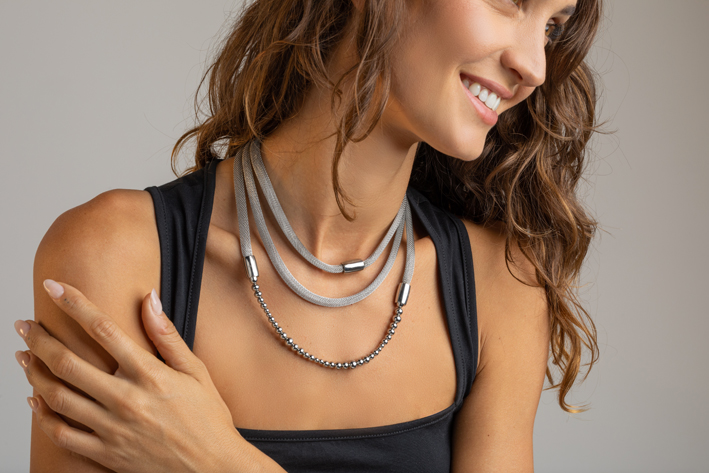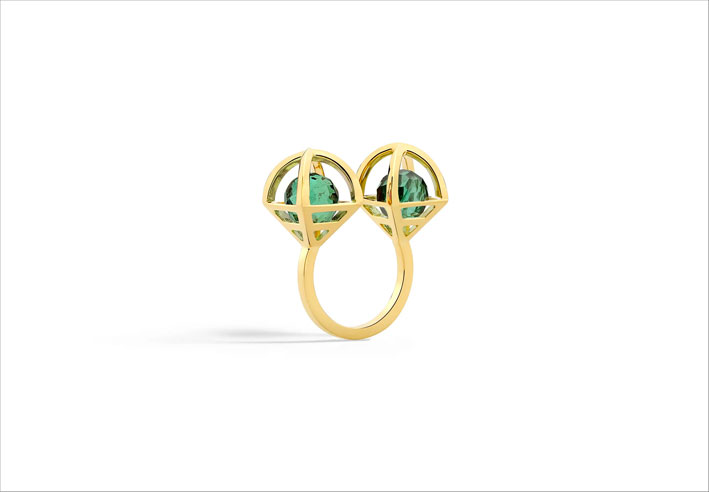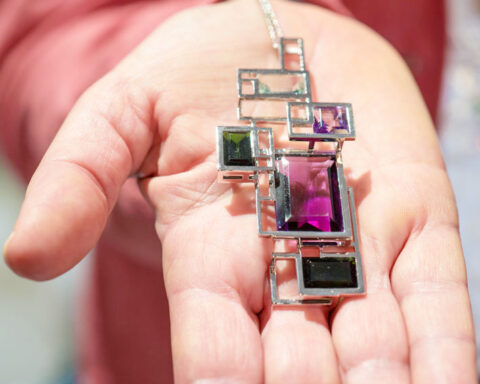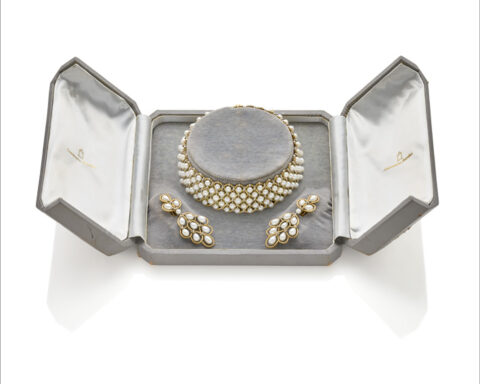Sotheby’s has organized the largest diadem exhibition ever staged in London in the last 20 years (28 May – 15 June). The event also coincides with the Jubilee Season, the celebrations for the 70th anniversary of the reign of Queen Elizabeth. And among the tiaras on display there is one more special than others: the historic Spencer Tiara, worn by one of the most influential members of the Royal Family: Lady Diana. The tiara dates back to 1767 and has been passed down from generation to generation within the Spencer family. The jewel was worn by Lady Diana, just over 40 years ago, also on the occasion of her wedding with Prince Charles in St. Paul’s Cathedral.
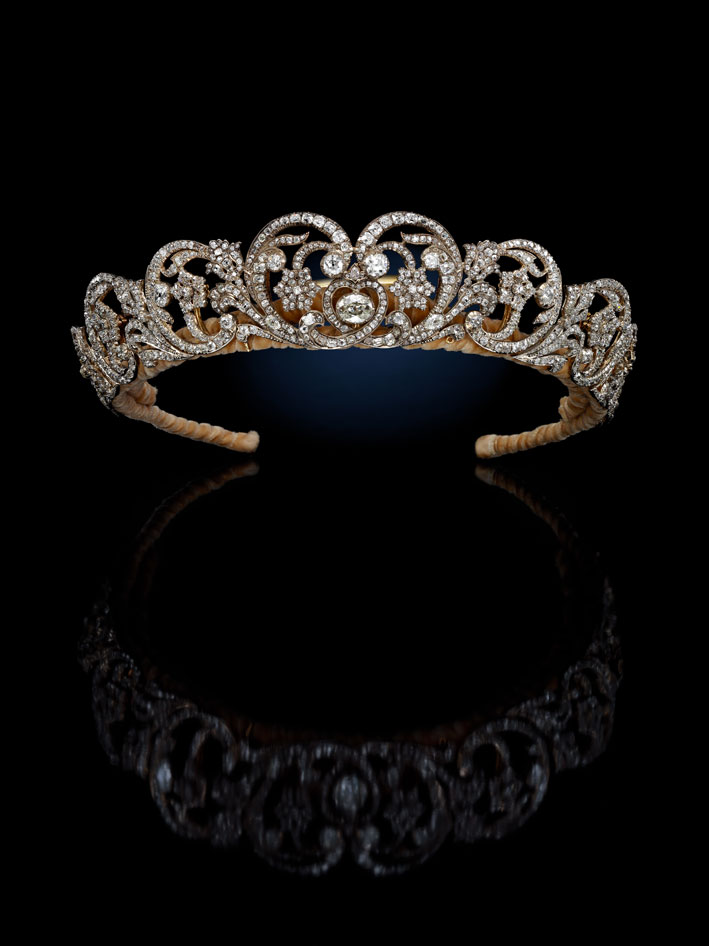
The Spencer tiara has a garland-style design, with a heart-shaped central element set with a diamond flanked by swirls, interspersed with star-shaped and trumpet-shaped flowers, also studded with diamonds, set in silver and gold. The central diamond was particularly loved by Lady Diana: her grandmother, Lady Cynthia Hamilton, received it as a wedding gift for her wedding in 1919 with Jack, Viscount Althorp, the future seventh Earl Spencer.
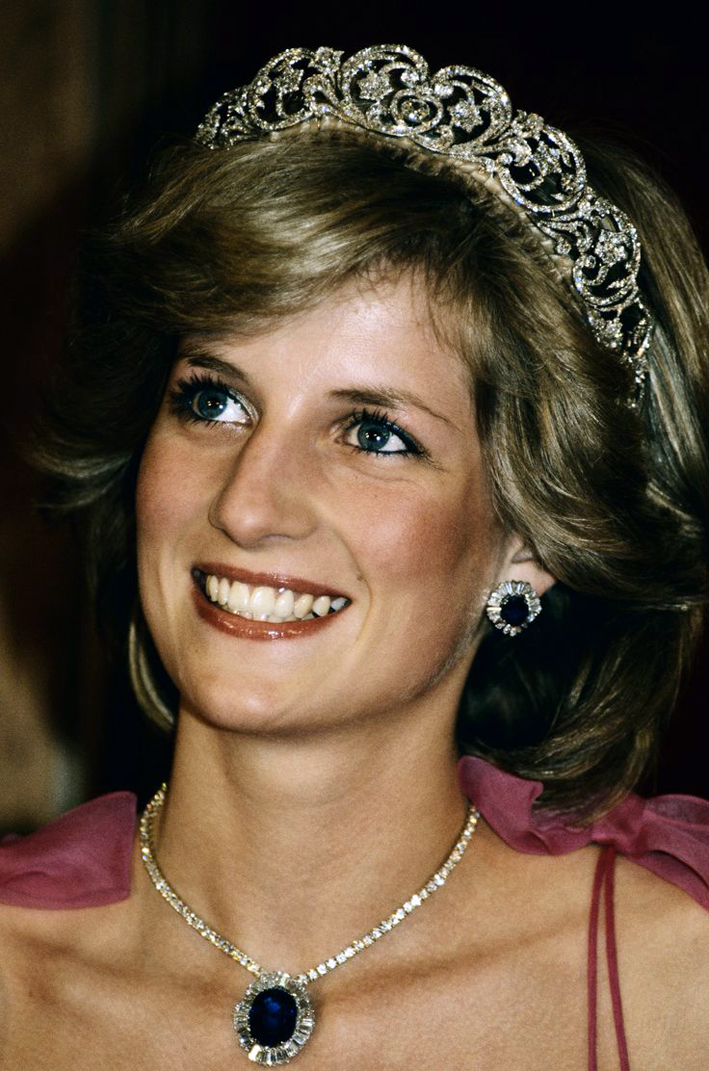
Over the course of nearly 200 years, as is often the case with jewelry of this type, the Spencer tiara was added and transformed until the crown jeweler, Garrard, was commissioned in the 1930s to transform the original tiara into the current jewel. Lady Diana was known for being fond of her Spencer Tiara, often wearing it for special events: she chose it at least seven times between 1983 and 1992.
The Queen’s Jubilee celebrations have given us the perfect opportunity to put on public display an outstanding selection of tiaras from noble and royal provenance, many of which haven’t been exhibited in decades. The sourcing of these jewels has been a labour of love, resulting in an exhibition that showcases the best iterations within the tiara style register, through some of its most famous incarnations – including the much-loved and photographed Spencer Tiara. This is also a wonderful moment for us to shine a special light on the dazzling craftsmanship delivered by generations of mainly British-based jewellers across several centuries of tiara making.
Kristian Spofforth, Head of Jewelery at Sotheby’s London
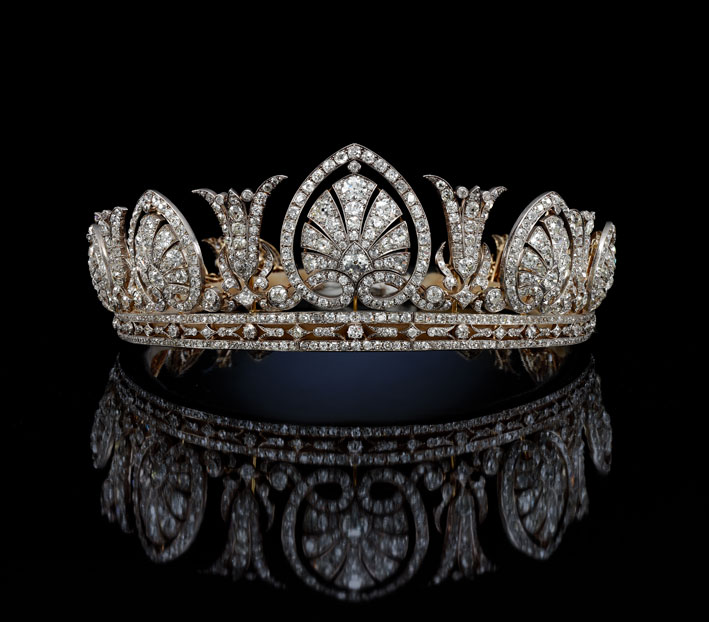
In addition to Lady Diana’s tiara, the exhibition features about fifty tiaras of aristocratic and royal provenance, with some pieces that will be exhibited publicly for the first time. Virtually all of the tiaras in the show were made and owned by British nobility and together they offer a dazzling and comprehensive review of all major tiara design styles, through some of the genre’s most exemplary exponents.
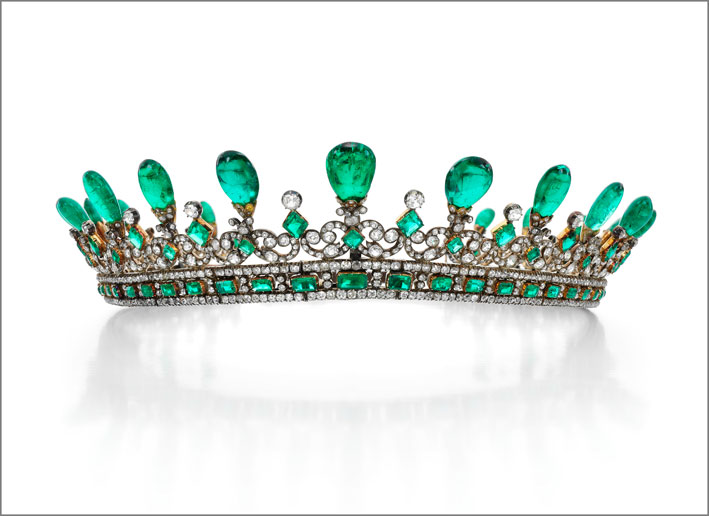
A number of tiaras in the exhibition in particular were worn on the occasion of the queen’s coronation in 1953, such as the Anglesey tiara, thought to have been made around 1890. Or the Derby Tiara, initially created for the Duchess of Devonshire in 1893 and the Westminster Halo Tiara, commissioned from Parisian jewelers Lacloche Frères in 1930 by the Duke of Westminster for his bride Loelia Ponsonby. Therefore, the most established designs within the tiara genre can be compared, such as the Empire style, Romantic Naturalism, Belle Époque, Art Deco, modern and contemporary genre.

Among the most special pieces there is also Queen Victoria’s emerald and diamond tiara, designed by Prince Consort Albert in his Gothic revival style in 1845. The tiara was made by the crown jeweler Joseph Kitching, for the princely sum (a that time) of 1,150 pounds. It is one of the many jewels the prince has devised for the queen over the years and was reportedly her favorite. It is also considered to be one of the most elegant and sumptuous colored gemstone tiaras ever created: set in gold it has cushion-shaped diamonds interspersed with step-cut emeralds lined up on its base, topped with additional diamonds and emeralds in swirls and topped with a Graduated row of 19 pear-shaped inverted cabochon emeralds, the largest of which weighs 15 carats.
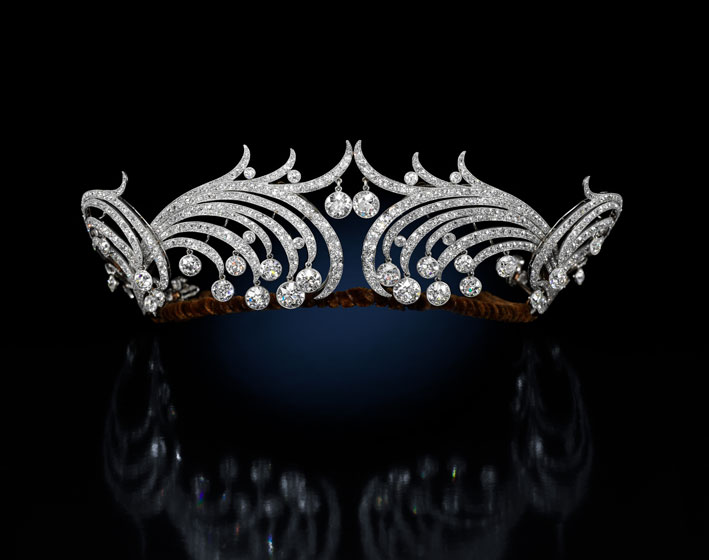
This tiara is often associated with representations of a younger Queen Victoria with her family, chief among them is Franz Xaver Winterhalter’s portrait The Royal Family in 1846, which depicts Queen Victoria with Prince Albert surrounded by their children, as well as to a number of the artist’s more intimate portraits. Queen Victoria is also known for wearing the tiara in several official engagements, including a state visit to France in 1855.

